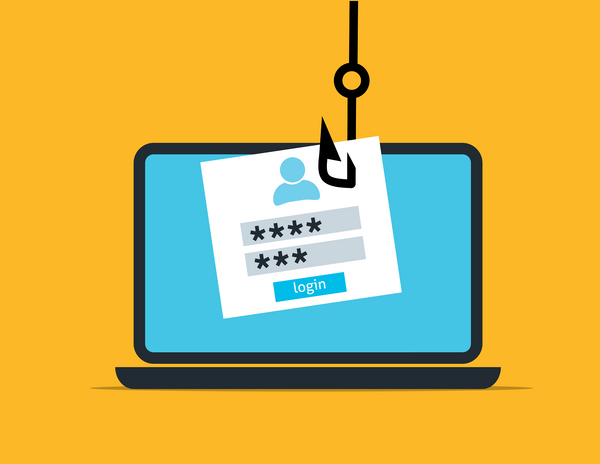Email Scams: How to Spot, Avoid and Report Them

An estimated 3.4 billion emails a day are sent by cybercriminals, designed to look like they come from trusted senders. These email scams pose as legitimate communications from banks, retailers, social media platforms – any trusted entity – with one goal: to lure you into revealing sensitive information, sending money, or installing malware on your devices.
Email scams account for 1.2% of global email traffic, and each one has the potential to lead to financial ruin, identity theft, or a cyber attack.
In this rapidly evolving battleground, knowledge is your strongest defense. Staying informed about the latest scam tactics and equipping yourself with the right tools can mean the difference between falling victim to these schemes and emerging unscathed.
Signs of a scam email
Most scam emails lead recipients to phishing websites, tricking them into revealing sensitive information like passwords, credit card numbers, and bank accounts or accessing malicious links and harmful attachments.
Spotting the telltale signs of a scam email can protect you and others from falling victim.
Here's how to detect fake emails:
1. Incorrect sender's address. Carefully check the sender's email address. Phishing emails often have an address that doesn't match the company or organization they're pretending to be from. For example, an email claiming to be from Apple but sent from "[email protected]" is likely a phishing attempt.
Other common fake emails include those claiming to be a "missed package delivery" from a service like FedEx but coming from an address such as "[email protected]" or emails with strange attachments supposedly from a trusted source like "[email protected]." These fake emails often have slightly altered or unusual addresses to trick recipients.
Always verify the sender's address by visiting the official website of the company or organization. If you're unsure, contact the company directly using information from their official site, not from the email.
Related: How To Spot and Avoid Tech Support Scams
2. Spelling and grammar mistakes clearly indicate a phishing email. Legitimate businesses take great care to ensure their emails are error-free, whereas phishers are likelier to make these mistakes. For instance, an email from "PayaPal" with typos is a red flag. However, it's important to note that with the rise of AI chatting and writing bots, grammatical mistakes are becoming less common.
However, it's important to note that with the rise of AI chatting and writing bots, grammatical mistakes in fake emails are becoming less common. Sophisticated phishing attempts might have polished language, but they can still contain subtle errors or awkward phrasing that give them away. Always read emails carefully; if anything seems off, it's better to be cautious.
Additionally, phishing emails might use odd formatting or inconsistent fonts and colors, which can be another sign of a scam. Legitimate companies maintain a consistent and professional appearance in their communications.
Related: PayPal Text Scams: How to Spot and Avoid Them
3. Urgent or threatening language. Phishing emails frequently use language that attempts to create a sense of urgency or threat to pressure you into taking action quickly. Phrases like "Your account will be suspended if you don't update your details immediately" are common phishing tactics.
Phrases like "Your account will be suspended if you don't update your details immediately" or "Your bank account will be frozen within 24 hours if you do not verify your identity" are common phishing tactics.
To protect yourself, always take a moment to pause and think before responding to urgent requests. Legitimate companies typically offer various ways to verify urgent messages and will not pressure you into immediate action.
Related: UPS text scam – I clicked on the link; what can I do?
4. Requests for personal information: Be wary of any email that asks you to provide sensitive information like passwords, credit card numbers, or social security numbers. Reputable companies will never ask for this information via email.
On the other hand, fraudulent emails may prompt you to click a link to verify your account information or update your billing details. Even if the email appears to be authentic, always go directly to the company's official website instead of clicking on any provided links.
Furthermore, reputable companies typically provide secure methods for updating personal information, such as encrypted websites or secure customer service channels. If an email requests personal information without these security measures, it is likely a scam.
Related: How to Tell the Difference Between a Holiday Scam and a Genuine Good Deal
5. Suspicious links or attachments: Hover your mouse over any links or attachments in the email to see if the URLs or file names look suspicious or out of place.
For example, a link that claims to be from "yourbank.com" but points to "yourbank.website.com" is a clear red flag.
Fake emails often include attachments labeled as invoices, receipts, or important documents. These attachments can contain malware or viruses. Always be cautious of unsolicited attachments, even if they appear to come from a trusted source.
To protect yourself, avoid clicking on links or downloading attachments from suspicious emails. Instead, visit the website directly by typing the URL into your browser. Use antivirus software to scan any unexpected attachments before opening them.
Related: 1 in 5 financial-themed spam emails in August are phishing attempts
Outsmart scammers with two powerful tools
Email scams that were once easy to spot have become increasingly difficult to detect with the naked eye as spammers employ the latest technologies to craft their impersonation emails.
Fortunately, you can fight fire with fire by harnessing cutting-edge solutions specifically designed to help you stay one step ahead of these nefarious actors.
Here are two examples:
1. Email Protection: This solution for Outlook and Gmail requires a one-time setup. After that, all incoming emails are automatically scanned before reaching your inbox, regardless of the platform you use—be it a computer, laptop, phone, or tablet. Email Protection intelligently displays labels in your inbox, clearly identifying safe and potentially unsafe emails and empowering you to make informed decisions. Additionally, it provides comprehensive statistics and threat detection details for each protected email account, allowing you to stay vigilant and proactive.
Bitdefender Email Protection is available now at no additional cost for new and existing Bitdefender Premium Security, Premium Security Plus, Ultimate Security, and Ultimate Security Plus plan holders.
2. Scamio is our next-generation, powerful scam-detection chatbot that quickly verifies the legitimacy of emails, links, QR codes, messages, and SMSs before they can harm you, your family, or your finances.
You can start chatting with Scamio right now, as it is completely free, and you can access it on any device or operating system via your web browser or through Facebook Messenger.
What to do when receiving scam emails
If you receive an email you suspect is a phishing attempt, here's what to do and not do with it.
1. Don't engage with it: Do not click on any links, open attachments, or reply to the message.
2. Forward the email to the company or organization being impersonated: Many companies have dedicated email addresses or reporting systems for phishing attempts.
3. Report it to your email provider: Most email providers have options to report phishing emails directly from your inbox.
4. Report it to government agencies: Report phishing attempts to agencies like the Federal Trade Commission (FTC).
By learning to identify email scams, reporting them promptly using and sharing Scamio with others, you can help protect yourself and dear ones from these cyber threats.
tags
Author
Cristina is a freelance writer and a mother of two living in Denmark. Her 15 years experience in communication includes developing content for tv, online, mobile apps, and a chatbot.
View all postsRight now Top posts
Uncovering IoT Vulnerabilities: Highlights from the Bitdefender - Netgear 2024 Threat Report
June 26, 2024
UEFA EURO 2024 Scams Are Already Here – How to Stay Safe
June 25, 2024
Most People Still Write Important Passwords Down, Bitdefender Report Finds
June 07, 2024
FOLLOW US ON SOCIAL MEDIA
You might also like
Bookmarks








